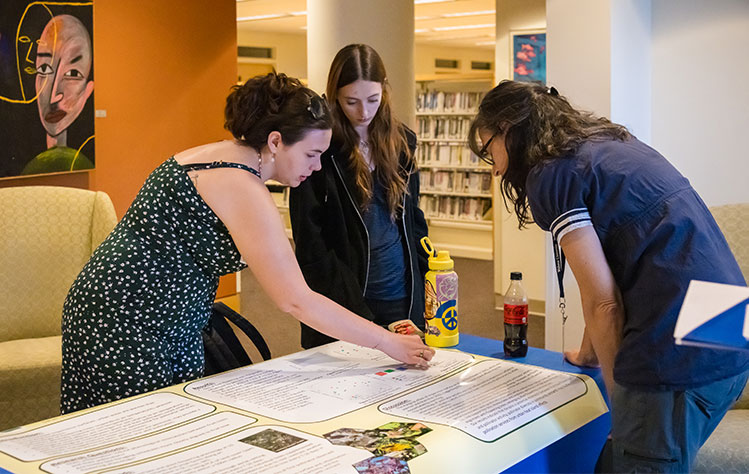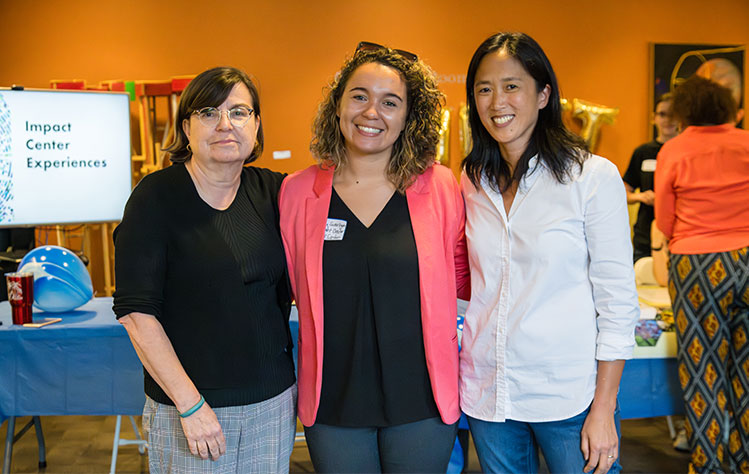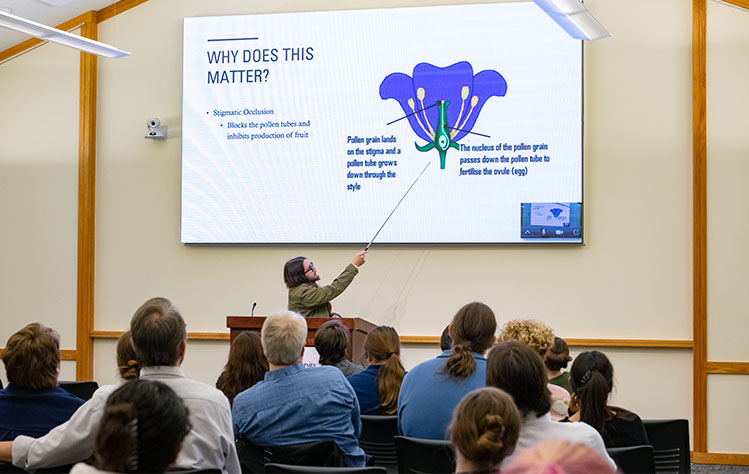Webster University Impact Center Increasing Accessibility to Learning Opportunities
March 27, 2024

Webster University has always had a focus on making higher education accessible to all — but particularly for underrepresented populations. The University also has a history of recognizing educational opportunity extends beyond a classroom environment. Its newly formed Impact Center is combining both outlooks to directly benefit undergraduate students.
The Impact Center supports and promotes signature learning experiences for all undergraduate students with a particular focus on reaching students with minority, rural area and first-generation backgrounds. It connects students with high-impact learning practices such as service learning, student leadership, study abroad, student employment, internship opportunities, signature courses and more.
“The concept of the Impact Center began years ago with key faculty and members of Academic Affairs,” said Mary Preuss, Webster University adjunct faculty and founder of the Impact Center. “We were brainstorming about high-impact practices and how to make them visible and accessible to students. I saw the opportunity to build the Center through grant funding and then moved forward with highlighting and supporting opportunities for students that go beyond the traditional classroom in teaching career readiness skills.”
According to the American Association of Colleges and Universities, high-impact practices are “a set of teaching and learning practices whose positive impact on students has been established by educational research.” High-impact practices are often co-curricular activities that give students a sense of belonging, benefit them holistically and prepare them for the working world.
Underserved students are the least likely to have access to high-impact practices. They often come from weaker academic backgrounds and are more likely to struggle with coursework. High-impact practices are a way for students to thrive and learn skills outside of the classroom that will prepare them for the working world.
The Impact Center closes this gap by centralizing Webster University’s high-impact opportunities in one place. This makes career-enhancing opportunities more visible and accessible to students.
“Webster has always had a number of strong high-impact practices, such as study abroad and undergraduate research, spread across our academic units,” said Nancy Hellerud, Vice President for Academic Affairs. “The Impact Center makes it easy for students, including prospective students, to see the array of experiential opportunities Webster offers. The Center provides structure, guidance in strengthening and adding high-impact practices and documentation (in the form of badges) of the learning experience for students. Through the Center, a student can see the array of opportunities and participate in several of them — a study abroad program with embedded research, the RAD (Research Across Disciplines) conference and a President’s Student/Faculty Collaborative Research Grant — to create a very robust experience.”
Limited access to high-impact practices can also stem from financial reasons. A student may not pursue an internship because it is unpaid. To help offset this, the Impact Center has its own federal work study funding which can be used to sponsor students working in departments around campus.
The skills learned from high-impact practices prepare students of any major to enter the workforce. While some students may be hesitant at first, they often encounter skills from their experience they will carry and use throughout the rest of their lives.
“At the start of the semester, one student spoke to their initial lack of confidence concerning their professionalism when interacting with the public,” shared Lindsay McDaniels Swearingen, assistant director of the Impact Center and program director of the Edward Jones Pathways Program. “Through their chosen high-impact experience, this student stepped out of their comfort zone and tracked their growth over the semester. At the end of the semester, they spoke of the challenge and benefit of having this type of experience, which directly contributed to the skills they'll need in the workplace.”
 Nancy Hellerud, Lindsay McDaniels Swearingen, and Mary Preuss at an Impact Center
event in August 2023.
Nancy Hellerud, Lindsay McDaniels Swearingen, and Mary Preuss at an Impact Center
event in August 2023.
Faculty and staff across the university are central in supervising these learning experiences. Learning experiences can include student leadership opportunities, undergraduate research programs, faculty-led study abroad programs, signature courses, on campus-jobs, off-campus internships through the Edward Jones Pathways Program, and more. These offerings are structured to be supplemental for each student: enhancing their learning experience rather than adding more work.
The Impact Center also serves as a means of networking. Students may connect with a Webster University community partner while they are going to school, but that familiarity could lead to a full-time job at the same company post-graduation.
At the end of each semester, the Impact Center encourages Impact Center students to participate in a showcase called “Research Across Disciplines,” or “RAD.” It allows students to reflect on and share what they learned throughout their chosen learning experience. This leads to increased retention of key takeaways from the semester.
“While many of these learning experiences existed prior to the Impact Center, pairing them with a process of intentional reflection has made all the difference,” said McDaniels Swearingen.
 An Impact Center student presents at the RAD Conference.
An Impact Center student presents at the RAD Conference.
Kerry Lee, interim director of the Career Planning and Development Center, spoke to how the Impact Center helps students to cultivate and identify their skills, therefore making it easier to articulate their strengths to employers post-graduation.
“Having a structured process that encourages students to reflect on their high-impact learning experiences and skills will serve them well in the future as they talk about their experiences in an interview or even informally,” said Lee. “By identifying the high-impact practices that are already happening on campus, the Impact Center can provide support and promote awareness of all the ways students can enhance their Webster University experience.”
In years to come, the Impact Center will continue to grow as it reflects emerging high-impact practices and adapts to meet the present needs of students. However, its focus, along with that of the University’s, will remain the same: remove barriers to connect students with opportunities for future success.
For more information about Webster University, visit webster.edu.
